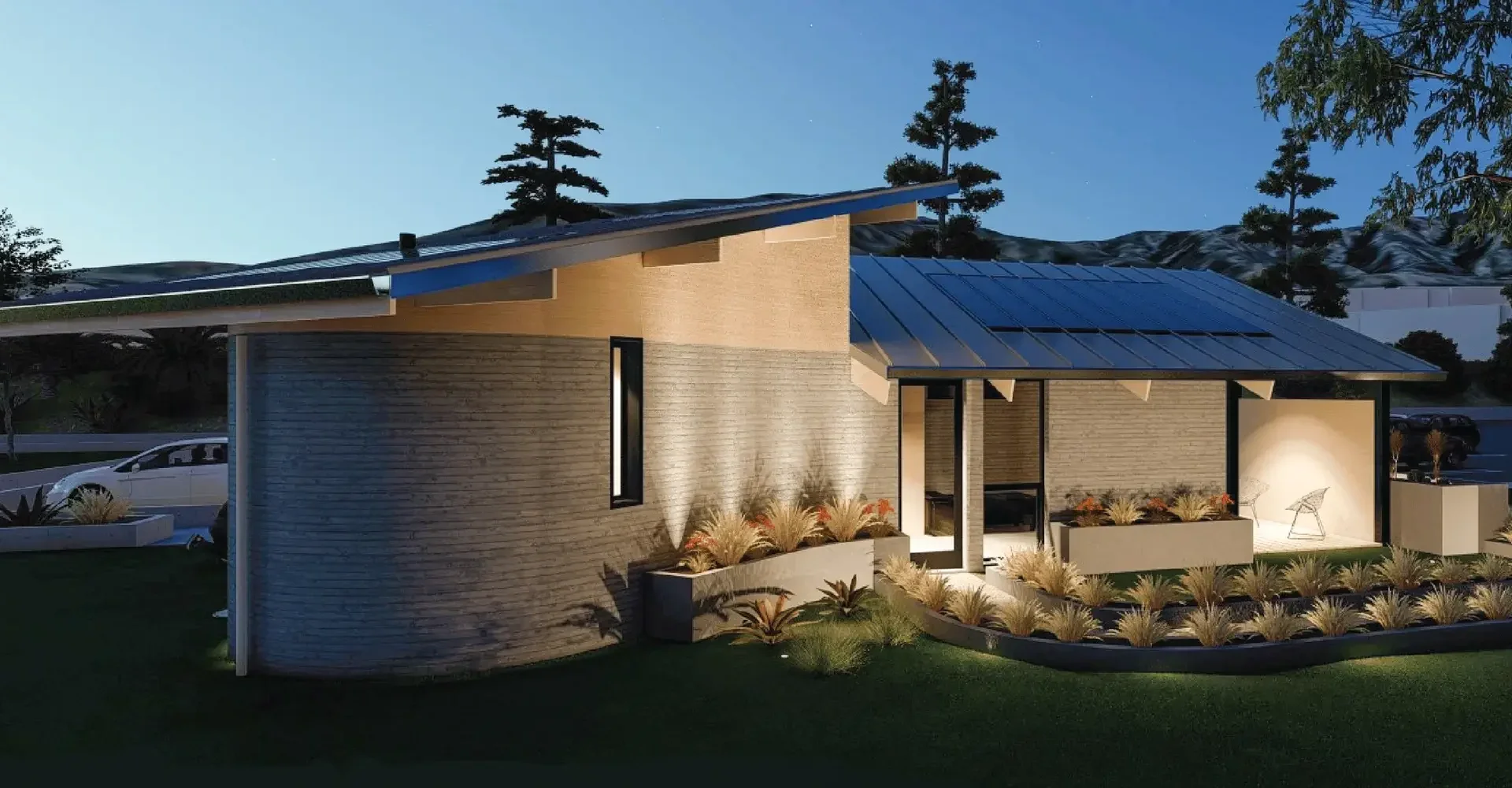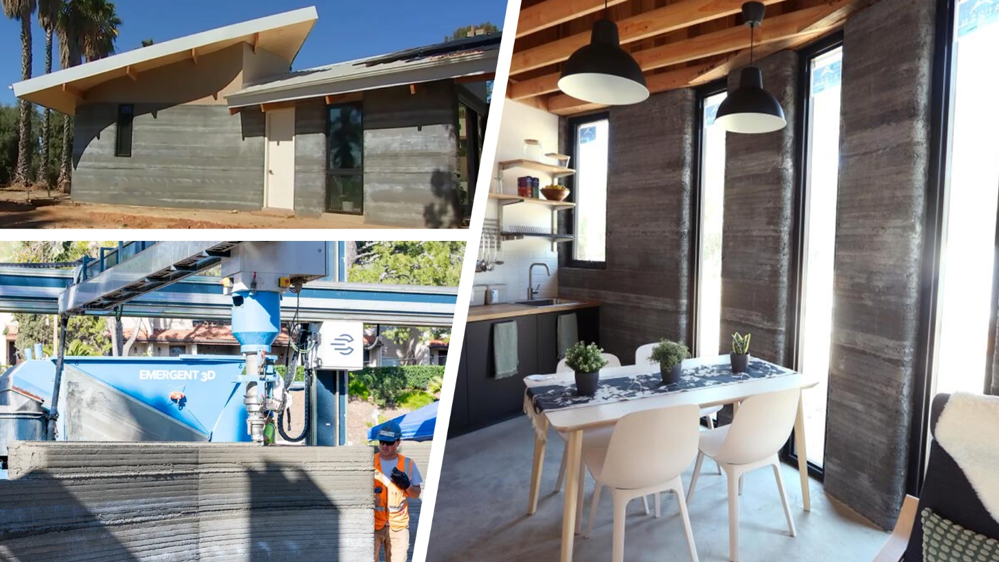
- Architecture Students from Woodbury University completed Los Angeles’ first fully permitted 3D printed net zero energy house.
- The house was part of a nationwide collegiate contest by the US Department of Energy.
- The walls of the 425 square-foot (40 m2) house, were executed in just 15 hours using COBOD International’s BOD2 construction 3D printer.
- Project construction costs were estimated at $250,000, less than a quarter of the average home prices in Burbank at $1.2 million.
Los Angeles, California, December 11, 2023 – Students from Woodbury University School of Architecture, in collaboration with 3D builder Emergent and LiUNA (Laborers’ International Union of North America), have successfully completed Los Angeles’ first fully-permitted net zero energy 3D printed house on its Burbank campus. Dubbed the Solar Futures House, the project is part of a nationwide solar decathlon contest among colleges by the US Department of Energy.
The concrete walls of the 425 SF (40 m2) house were printed in just 15 hours with COBOD International’s BOD2, the world’s most used 3D construction printers. The demonstrated speed and efficiency of the 3D printing technology verified that such could be part of the solution to address the homelessness crisis gripping LA. The Solar Futures House price with construction costs estimated at just $250,000 is also in stark contrast to the average home price of $1.2 million in Burbank.
Donald Ajamian, CEO of Emergent, commented on the project: “The Solar Futures House demonstrates the potential of 3D construction printing and its advantages for the industry. By partnering with COBOD International and leveraging their automation technology, we are not only building homes but also leading the way towards a more sustainable future”.
Given its significance as LA’s first fully permitted 3D printed net zero energy home, the Solar Futures House has already garnered attention from notable media outlets such as the Los Angeles Times, ABC News, CBS, and more. Besides the noteworthy achievement, the building further distinguishes itself through its organically designed 3D printed concrete walls and incorporation of sustainable elements such as solar power generation and water recirculation.
In 2023, the US construction industry is facing a severe shortage of skilled labor, surpassing 500,000 workers, according to Associated Builders & Contractors (ABC). The integration of automation technologies, like 3D printing, could significantly contribute to bridging this gap, particularly when combined with the adoption and training of the future workforce, as demonstrated by the Solar Futures House project.
Philip Lund-Nielsen, Co-Founder and Head of Americas at COBOD International, remarked from the company’s base in Miami, FL: “The construction industry is grappling with a significant shortage of skilled labor, compounded by a lack of interest from young individuals for pursuing careers in conventional construction. We believe that arming and training the future workforce with automation technologies, such as 3D printers, can effectively address this issue. We are very proud to see our 3D printers employed by yet another academic institution, in collaboration with Emergent, adding to the list of global educational counterparts including Virginia Tech, Technical University of Denmark, Technical University of Braunschweig in Germany, the German University of Technology in Oman, and more”.
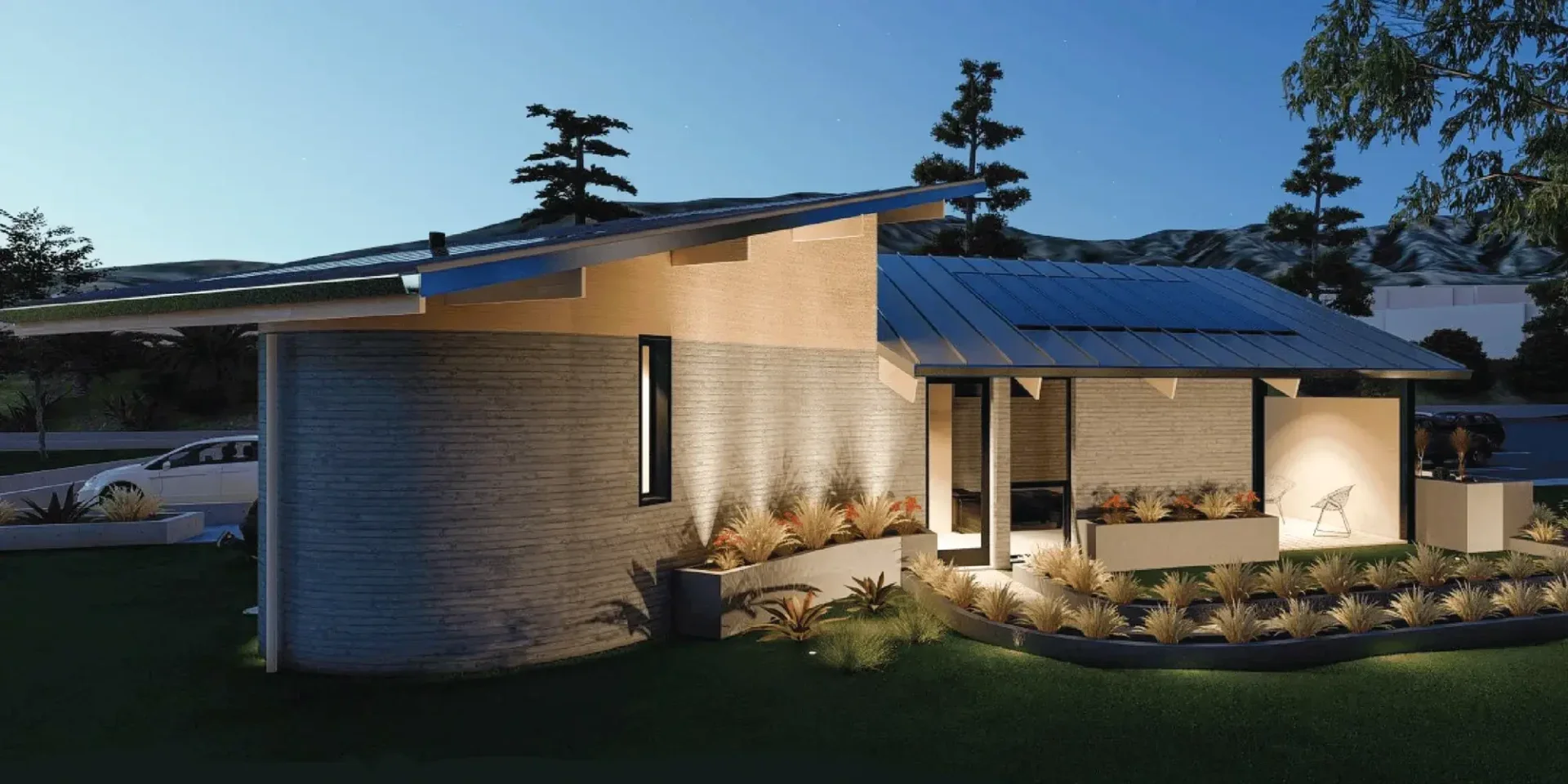
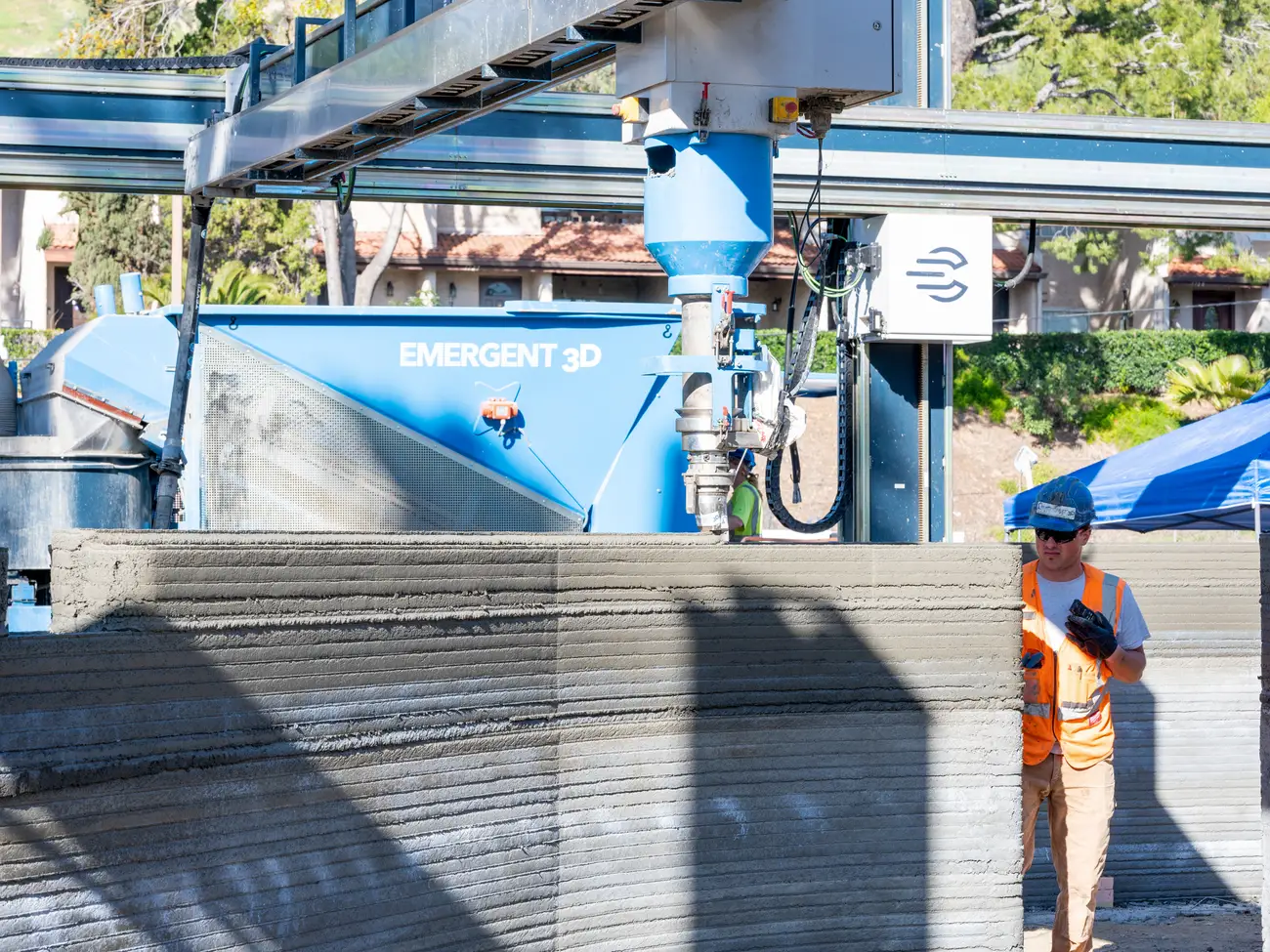
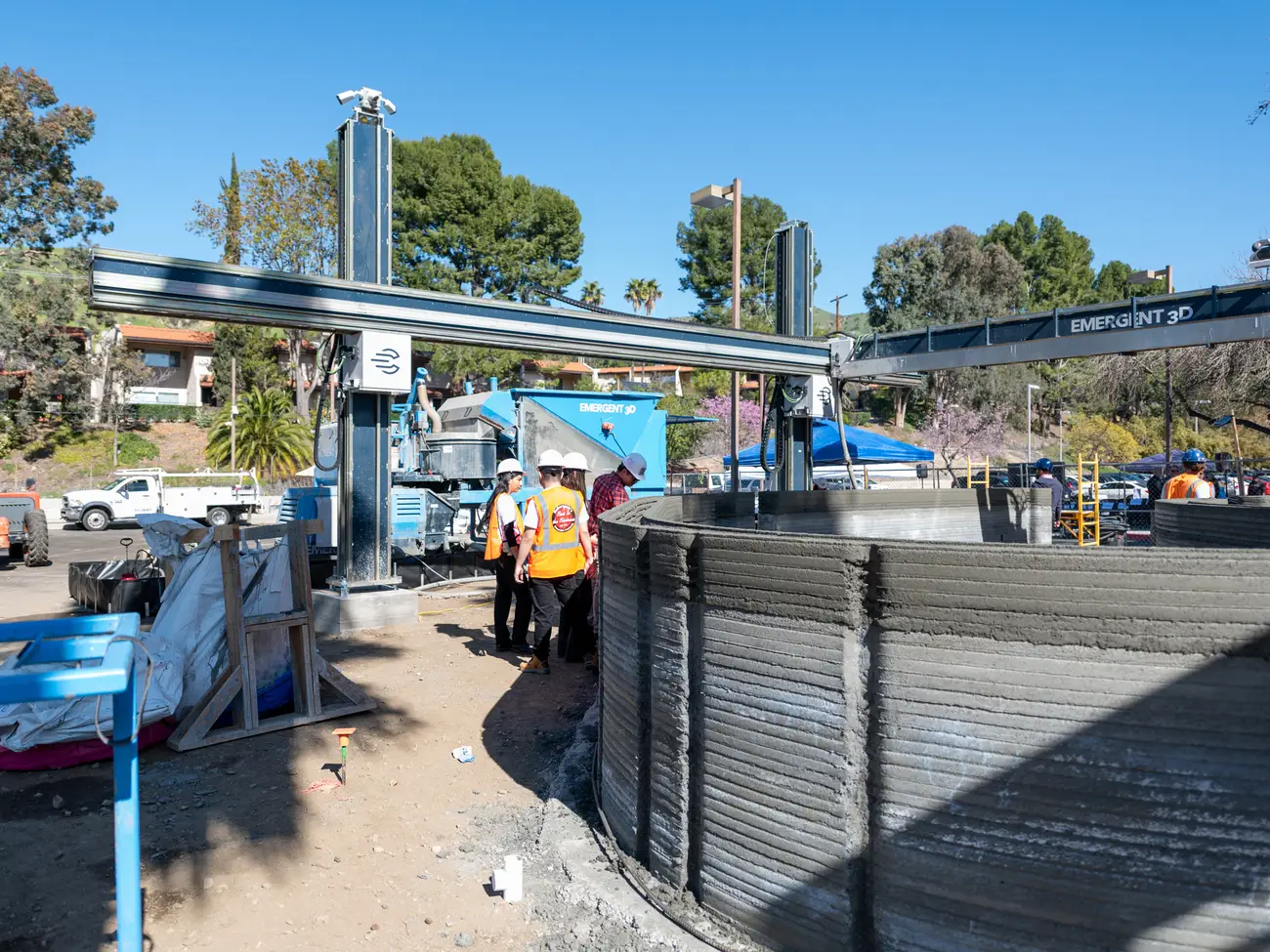
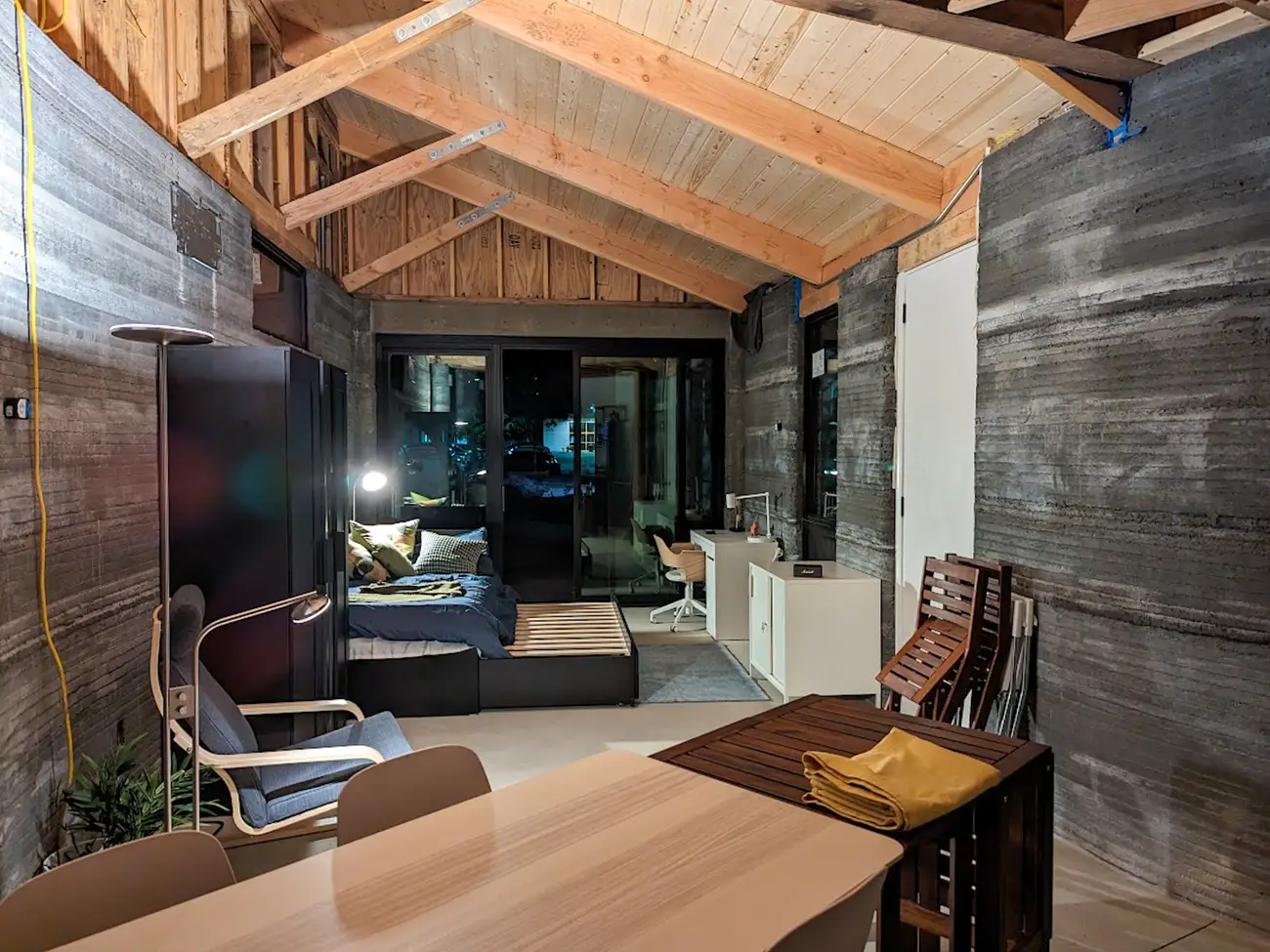

RELEVANT LINKS
- Visit COBOD Website
- Visit Emergent
- Read Associated Builders and Contractors report
- Explore more about Solar Futures House
ABOUT COBOD INTERNATIONAL
COBOD stands as the global leader in supplying 3D printers for the construction sector, promoting over 70 printers distributed across North and Latin America, Europe, the Middle East, Africa, and Asia-Pacific. Driven by a mission to revolutionize construction through multifunctional robots utilizing 3D printing, COBOD envisions automating half of the construction processes to achieve faster, cost-effective, sustainable results with enhanced design versatility.
From residential, commercial, and public structures to sports facilities and educational institutions, COBOD’s 3D printers have been instrumental in erecting 1 to 3-story structures across all six inhabited continents. Their innovative technology also extends to developing large-scale data centers, wind turbine towers, and more.
Embracing an open-source material approach, COBOD collaborates with global partners, including customers, academia, and suppliers. The company, backed by prominent shareholders such as General Electric, CEMEX, Holcim, and PERI, operates from its main office in Copenhagen, Denmark, and regional competence centers in Miami, Florida, and Kuala Lumpur, Malaysia. COBOD’s dynamic team comprises over 100 professionals from 25 diverse nationalities.
ABOUT EMERGENT
Emergent is revolutionizing the housing industry by blending old world elegance with cutting-edge innovations in construction technology. With a vision to restore hope and create a sustainable future, Emergent is harnessing the power of new world advancements to deliver homes that surpass traditional expectations.
